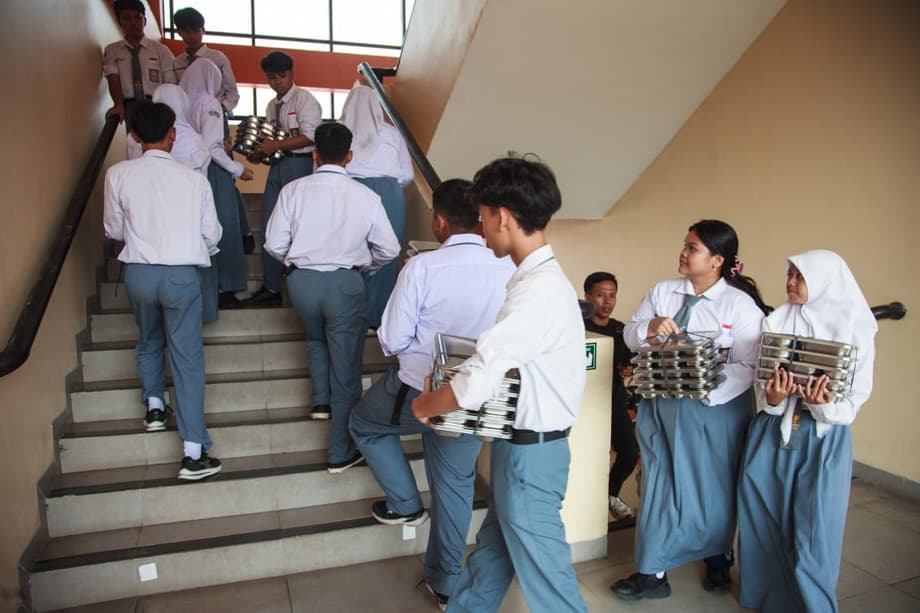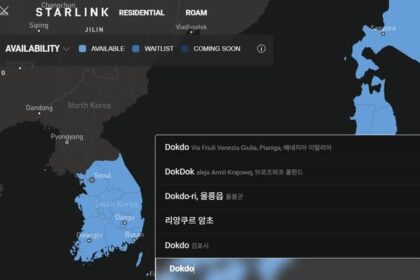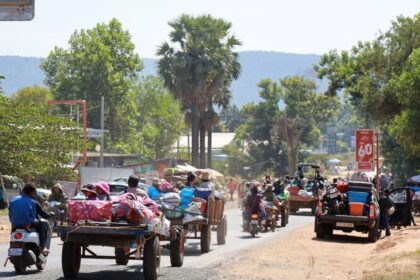Why Hong Kong schools are looking south
Hong Kong’s direct subsidy schools are preparing a targeted push into Southeast Asia as a new admissions window opens for non local students. The Direct Subsidy Scheme (DSS) Schools Council says more than 60 percent of its member schools intend to take part in a trial that allows extra places for students holding visas to study on a self financing basis. Council leaders are weighing school promotion trips in the near term to explain Hong Kong’s education options to families in nearby markets. The move signals a clear shift in how semi private schools approach enrollment and reflects a broader effort to bring fresh talent and diversity into classrooms.
- Why Hong Kong schools are looking south
- What makes DSS schools different
- Southeast Asia student markets in focus
- Competition and collaboration with international schools
- Benefits and concerns
- Admissions, visas and costs explained
- Lessons from PPP models in Asia
- How this fits Hong Kong education strategy
- What to Know
The policy, announced by Chief Executive John Lee in his policy address, permits DSS schools to apply for additional seats specifically for students who need visas. These seats sit outside the government funded quota, so they do not replace places for local pupils. Schools can charge fees for the self financed seats, subject to existing approval processes for school fees. Advocates argue that the measure can help stabilize class sizes during a period of shrinking student cohorts and can widen school choice for both local and incoming families.
School leaders point to Southeast Asia for an initial outreach because the region is close, travel links are strong, and many families already look to Hong Kong for English medium learning with a strong Chinese language component. Parents in Bangkok, Kuala Lumpur, Ho Chi Minh City, Jakarta, and Manila pay attention to international pathways and often consider a mix of British, IB, and bilingual curricula. DSS schools that teach in English and also build students’ Chinese proficiency may find a receptive audience, especially among families seeking access to Hong Kong or overseas universities after secondary school.
What the trial scheme allows
The new arrangement lets DSS schools apply for extra student visa places that are financed by tuition, not by the public subvention. This separates the admissions track for non local students from the core allocation for Hong Kong residents. Education authorities will still oversee school fee applications and quality assurance. The change gives schools room to expand without reshuffling local enrollment, an issue that has caused tension in past debates on internationalization.
Schools that opt in will shape their own recruitment plans while complying with admission rules and visa procedures. In practice, that means interviews or entrance tests can be used, and bridging support may be offered to help new students adjust to language and curriculum. The council has indicated a short term plan to visit overseas markets to explain programs, entry requirements, and pathways to local or international qualifications. Families should expect clear guidance on timelines, documentation, and the kind of academic profile schools seek.
Why Southeast Asia
Geography is the simple draw. Travel from many Southeast Asian cities to Hong Kong takes only a few hours, which allows parents to visit campuses and maintain close contact if a child studies in the city. Cultural familiarity also helps. Many families in the region value English medium education, have exposure to Chinese language learning, and already see Hong Kong as a safe, cosmopolitan destination with strong links to global business and finance.
Curricular alignment is another factor. A number of schools in Southeast Asia follow British style programs, the Cambridge pathway, or the IB Diploma Programme (IB). Many DSS schools run English medium instruction and offer qualifications such as the Hong Kong Diploma of Secondary Education (HKDSE), the IB Diploma, or IGCSE in the middle years. The overlap makes transfer more straightforward than moving into a completely different national system. It also creates a smoother path to universities in Hong Kong and abroad.
What makes DSS schools different
DSS schools sit at the intersection of public and private education. They receive government subsidies, yet they can charge tuition and have more room to design curriculum, set admissions policies, and choose the language of instruction. This model resembles public private partnership approaches in other places, such as charter schools in the United States. The combination of public oversight and school level autonomy aims to promote innovation, responsiveness to community needs, and program diversity under a common regulatory framework.
That autonomy translates into practical differences for students. Many DSS schools emphasize English medium teaching across key subjects, while still providing strong Chinese language instruction. Some run the IB Diploma alongside or in place of the HKDSE, and several offer Cambridge IGCSE in earlier grades. Co curricular programs are a major focus, with music, sports, service, and technology activities that rival those found in international schools. Admissions are school based rather than controlled by territory wide allocation, so interviews, written tasks, and portfolio reviews are common.
Flexibility on curriculum and tuition
Curriculum flexibility has helped DSS schools adapt to changing expectations. Schools can pilot new subject combinations, expand STEM and coding, or build project based learning modules. Language support is also in play. For incoming students who need more English or Chinese, schools can deploy bridging classes, additional language periods, or teaching assistants to accelerate progress. These tweaks can be rolled out more quickly than in the fully aided sector, which is one reason DSS institutions often trial new approaches first.
Fee charging is part of the model, and it will be central to the self financed seats for visa holders. Schools must apply to the Education Bureau to adjust fees, and increases are reviewed against operating needs and value for money. Families should expect a wide fee range across DSS schools. A smaller campus with fewer facilities may charge less than a large school with extensive laboratories and arts spaces. Some institutions also collect capital levies, and a few may issue debentures that reduce annual fees. Financial aid and scholarships exist at certain schools, though they are limited and competitive.
Language and syllabus alignment
Because many DSS schools teach in English, they attract families aiming for international fluency while keeping Chinese literacy in the picture. This mix can be especially appealing to Southeast Asian students who have studied in English and want to build Chinese language skills without switching to a fully local track. Schools that offer the IB Diploma or the Cambridge pathway give a familiar structure to students from regional British style programs.
The Hong Kong Diploma of Secondary Education is different from British A level and the IB Diploma, but universities in Hong Kong and overseas accept HKDSE results for entry. Several DSS schools provide guidance on subject selection to align with university goals. Where needed, schools may prepare students for standardized tests and help with language certification, which can include IELTS or TOEFL for English and HSK for Chinese language proficiency.
Southeast Asia student markets in focus
School representatives say the first wave of outreach will likely cover Malaysia, Thailand, Vietnam, Indonesia, and the Philippines. These countries have growing middle classes, rising demand for English medium education, and families who already invest in tutoring or international programs. The presence of overseas Chinese communities, and broader regional interest in Chinese language, also play a role. Hong Kong’s position as a gateway to mainland China and the Greater Bay Area adds a practical draw for parents who see value in future careers that connect with Chinese markets.
Malaysia has a strong network of private and international schools, which means students there often follow IGCSE and IB paths. That cohort is already primed for English medium study and could integrate well into DSS programs. Thailand and Vietnam have fast growing private education sectors and expanding bilingual options, with families willing to send children abroad for the last few years of secondary school. Indonesia and the Philippines supply a steady stream of students to international schools across the region, and they have communities that already consider Hong Kong for university.
Travel convenience matters. Regular flights, short travel times, and family ties in the city can be decisive. Hong Kong schools can schedule entrance interviews online, then confirm placement with in person visits. Expo style recruitment in these cities would let parents compare offers, understand boarding or guardianship rules, and see how DSS pathways map to Hong Kong universities and beyond. The council expects that explaining school culture, discipline, and pastoral care will be as important as sharing league tables and test results.
Malaysia and Singapore families
Families in Malaysia and Singapore often seek a balance of English, Chinese, and international credentials. Hong Kong can offer a similar mix at a different price point and with direct entry routes to local universities. Parents familiar with Cambridge or IB will find known frameworks, while those who choose the HKDSE can still aim for overseas admissions with school support.
Thailand, Vietnam, Indonesia appetite
In Thailand, Vietnam, and Indonesia, the appetite for study abroad grows each year. Many students start in bilingual schools and plan to complete senior secondary in a city that offers English instruction, city safety, and a strong academic reputation. Hong Kong matches these priorities. Schools that provide clear pathways and strong language support can draw interest from families who value structured guidance and a predictable university transition.
Competition and collaboration with international schools
DSS schools will compete with international schools for overseas students, but there is also room for collaboration. International schools in Hong Kong are well known, with long waitlists in some years and very high fees. DSS schools can position themselves as an alternative that blends international exposure with local expertise and a more moderate fee level. The bilingual edge, co curricular depth, and local university links are selling points. At the same time, DSS schools may partner with international schools on joint events, exams, and teacher training to raise standards across the board.
Families will compare facilities, teacher profiles, exam outcomes, and university placements. Transparent information will be crucial. DSS schools that publish clear admissions criteria, language requirements, and detailed fee schedules are likely to gain trust. Strong pastoral care and active parent communication will matter just as much as academic rankings.
Benefits and concerns
Supporters see multiple benefits. Schools can stabilize enrollment and sustain programs that might otherwise be cut in smaller cohorts. Classrooms become more diverse, which can enrich discussions and broaden student perspectives. The move also aligns with Hong Kong’s talent drive by offering credible school options for families who relocate for work. If implemented well, the trial can create a virtuous circle where successful students attract more interest and strengthen the city’s education brand.
Concerns focus on access, fairness, and student support. Some parents worry about a split track if self financed students have different fees or services. Clear policies can address this by applying the same academic standards and pastoral care to all students. Language support is another issue. Schools need to ensure that English and Chinese learning are scaffolded so new arrivals keep pace without slowing the class. Teacher workload must be watched, and resources should be allocated to counseling and integration activities.
Quality assurance remains central. Fee setting requires approval, and schools must demonstrate value. Admission should be rigorous and transparent so families understand expectations. Effective communication with local parents will also be essential to maintain trust, especially in districts where enrollment has tightened. Done thoughtfully, the scheme can lift program quality for everyone rather than create a narrow benefit for fee payers.
For Hong Kong schools
For school administrators, the trial opens room to safeguard specialist subjects, retain teachers, and plan investments. A steadier student count supports music ensembles, debate teams, robotics labs, and exchange programs that thrive on a critical mass of participants. The added diversity can also spur teachers to refine pedagogy, adopt new assessments, and build cross cultural learning projects.
For parents and students
For families, the key advantages are proximity, a bilingual environment, and recognized pathways to university. The potential tradeoffs include added cost, competitive entry, and the need to adjust to a different school culture. Strong induction programs, language support, and clear guidance on exam choices can help students settle quickly and succeed.
Admissions, visas and costs explained
Non local students will need a student visa issued by Hong Kong’s Immigration Department. For minors, a local guardian is required. Schools often provide lists of agencies or guidelines on guardianship arrangements, though families should research carefully and visit in person when possible. Application timelines typically run a year in advance for senior secondary entry. Schools may offer rolling admissions if places open later, but popular grades fill early.
Costs vary widely. Tuition for DSS schools ranges from modest to premium, depending on campus scale and program mix. Self financed places will usually sit in the higher band to cover the full cost of education. Families should budget for uniforms, books, transport, exam fees, and any capital levy or debenture if the school uses one. A small number of schools offer bursaries or scholarships based on need or merit, yet these are limited and competitive. Clear fee tables and refund policies are worth reviewing before accepting an offer.
Language readiness is often the deciding factor. Many DSS schools expect strong English, and those teaching in Chinese for certain subjects require functional Chinese. Schools that recruit overseas students typically run language screening and may provide bridging classes. Parents should ask about the expected level on arrival and the timeline to reach full curriculum participation.
Lessons from PPP models in Asia
Education systems across Asia use public private partnership ideas to expand quality and choice. A review of regional models places Hong Kong’s DSS alongside charter style and contract school approaches found elsewhere. These arrangements combine public oversight with school autonomy. They can improve access and program diversity when regulation is clear and accountability is strong. The balance is delicate. Schools need room to innovate, while authorities ensure that quality, equity, and financial transparency remain intact.
International curriculum expansion, such as the growth of the IB Diploma in the region, offers both opportunities and pressure points. IB helps schools attract globally minded families, yet the rapid growth can strain teacher development and assessment consistency. Schools using IB alongside local qualifications need robust staff training, honest workload planning, and clear communication to students about assessment demands. Careful pacing helps maintain teaching quality as enrollments grow.
How this fits Hong Kong education strategy
The outreach to Southeast Asia complements wider moves to position Hong Kong as an education and research hub. Plans for a university town in the Northern Metropolis aim to reinforce higher education capacity and links to innovation. A stronger pipeline of well prepared secondary students supports that goal, while giving employers confidence that family relocation to Hong Kong comes with solid schooling options.
If DSS schools can execute the recruitment drive carefully, they can help the city retain teaching talent, preserve program breadth, and strengthen links with Southeast Asian communities. The near term task is practical. Schools must build recruitment teams, set transparent criteria, and provide language and pastoral support so that incoming students thrive. Success will depend on steady communication with local parents as well as new families.
What to Know
- More than 60 percent of DSS member schools plan to admit additional non local students under a government trial.
- The scheme lets DSS schools apply for extra visa holder places on a self financing basis, separate from government funded quotas.
- The DSS Schools Council is considering short term promotion visits to Southeast Asian markets.
- Initial focus is on nearby countries with strong travel links and curricular alignment, including Malaysia, Thailand, Vietnam, Indonesia, and the Philippines.
- DSS schools have more autonomy on curriculum, admissions, and language of instruction, and they can charge tuition with regulatory approval.
- Families should expect varied fees, language requirements, and possible bridging support, with limited scholarships in some schools.
- Student visas require a local guardian for minors, and application timelines typically start up to a year in advance.
- Benefits include stable enrollment, more diverse classrooms, and stronger pathways to local and overseas universities.
- Key challenges are language support, transparent fees, fair access, and maintaining teaching quality as schools grow.












